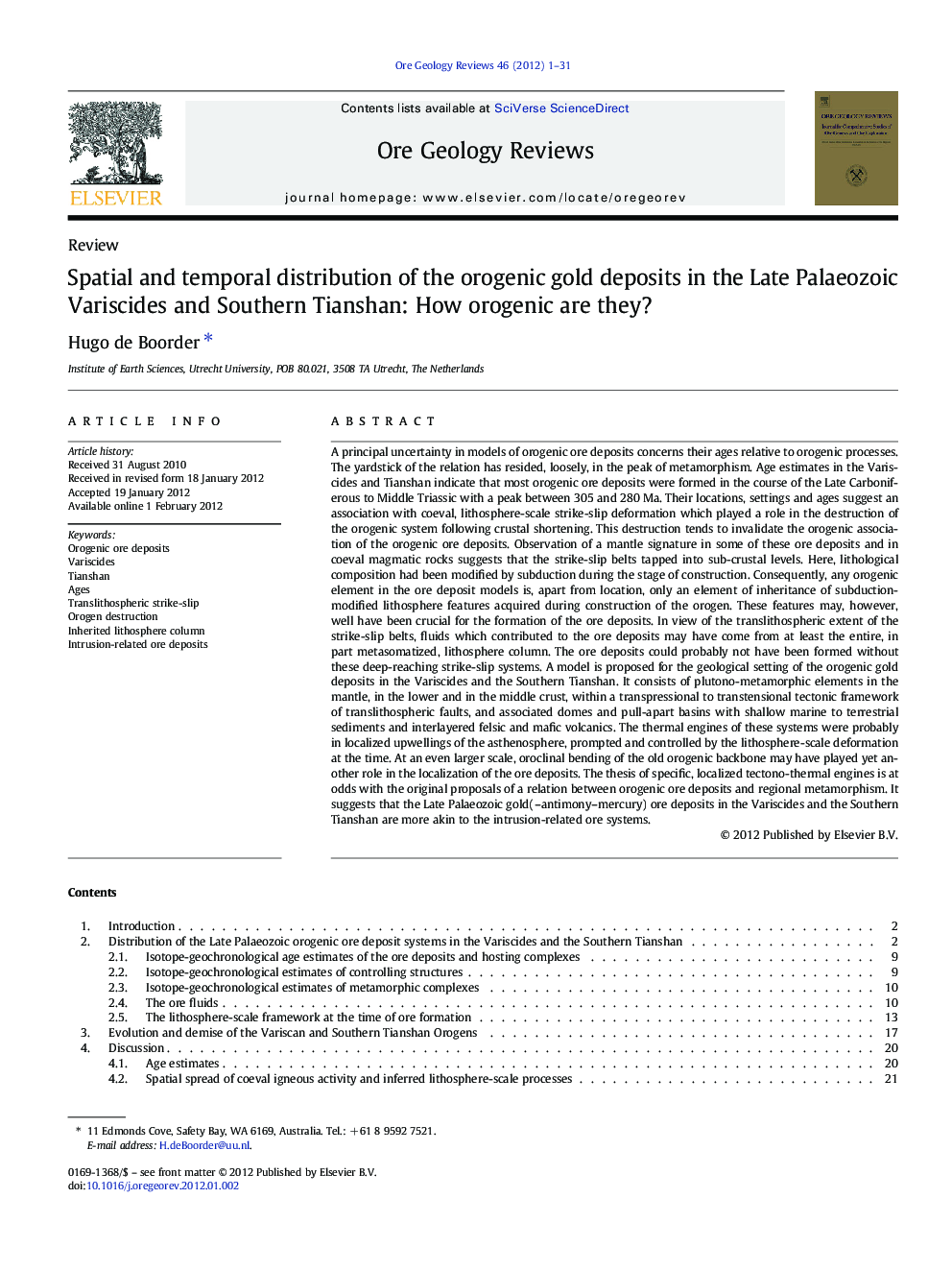| Article ID | Journal | Published Year | Pages | File Type |
|---|---|---|---|---|
| 4697616 | Ore Geology Reviews | 2012 | 31 Pages |
A principal uncertainty in models of orogenic ore deposits concerns their ages relative to orogenic processes. The yardstick of the relation has resided, loosely, in the peak of metamorphism. Age estimates in the Variscides and Tianshan indicate that most orogenic ore deposits were formed in the course of the Late Carboniferous to Middle Triassic with a peak between 305 and 280 Ma. Their locations, settings and ages suggest an association with coeval, lithosphere-scale strike-slip deformation which played a role in the destruction of the orogenic system following crustal shortening. This destruction tends to invalidate the orogenic association of the orogenic ore deposits. Observation of a mantle signature in some of these ore deposits and in coeval magmatic rocks suggests that the strike-slip belts tapped into sub-crustal levels. Here, lithological composition had been modified by subduction during the stage of construction. Consequently, any orogenic element in the ore deposit models is, apart from location, only an element of inheritance of subduction-modified lithosphere features acquired during construction of the orogen. These features may, however, well have been crucial for the formation of the ore deposits. In view of the translithospheric extent of the strike-slip belts, fluids which contributed to the ore deposits may have come from at least the entire, in part metasomatized, lithosphere column. The ore deposits could probably not have been formed without these deep-reaching strike-slip systems. A model is proposed for the geological setting of the orogenic gold deposits in the Variscides and the Southern Tianshan. It consists of plutono-metamorphic elements in the mantle, in the lower and in the middle crust, within a transpressional to transtensional tectonic framework of translithospheric faults, and associated domes and pull-apart basins with shallow marine to terrestrial sediments and interlayered felsic and mafic volcanics. The thermal engines of these systems were probably in localized upwellings of the asthenosphere, prompted and controlled by the lithosphere-scale deformation at the time. At an even larger scale, oroclinal bending of the old orogenic backbone may have played yet another role in the localization of the ore deposits. The thesis of specific, localized tectono-thermal engines is at odds with the original proposals of a relation between orogenic ore deposits and regional metamorphism. It suggests that the Late Palaeozoic gold(–antimony–mercury) ore deposits in the Variscides and the Southern Tianshan are more akin to the intrusion-related ore systems.
► Late Palaeozoic gold in south Eurasia likely formed in intrusion-related systems. ► Their roots are in the deep lithosphere and possibly the asthenosphere. ► Their complexity is determined by the heterogeneity of the lithosphere column. ► The systems depended on translithospheric strike-slip zones. ► The gold deposits, though hosted by orogens, are not of the orogenic type.Graphical abstractThis paper combines models modified from, left to right, Leyreloup, 1992 and Mulch et al., 2002 and Maluski et al. (1991) as elements for a lithosphere-scale process leading to so-called orogenic ore deposits in the Variscides and Southern Tianshan, e.g., Salsigne in the southern FrenchMassif Central. Translithospheric strike-slip deformation is thought to have kickstarted and maintained the systems. In view of the localized heat engines, the ore deposits are more akin to the intrusion-related ore systems.Figure optionsDownload full-size imageDownload as PowerPoint slide
